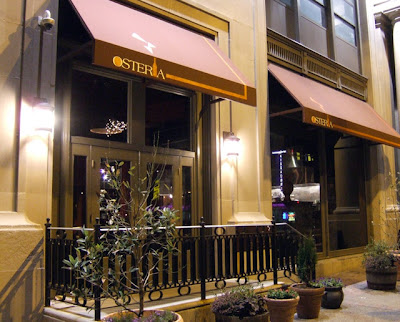 After a Sunday matinee at the Keswick Theatre, my wife and I decided to forego the post-concert crowds at the couple of watering holes in Glenside, PA, and instead head a few clicks down the road. Earth Bread + Brewery has been on my radar ever since first-time restaurant owners Tom Baker and Peggy Zwerver opened their new digs in Mount Airy last year. An unseasonably hot April evening seemed like as good a time as any to stop in for an early dinner.
After a Sunday matinee at the Keswick Theatre, my wife and I decided to forego the post-concert crowds at the couple of watering holes in Glenside, PA, and instead head a few clicks down the road. Earth Bread + Brewery has been on my radar ever since first-time restaurant owners Tom Baker and Peggy Zwerver opened their new digs in Mount Airy last year. An unseasonably hot April evening seemed like as good a time as any to stop in for an early dinner.While I’d already heard encouraging words about the pizzas at Earth Bread + Brewery, it was the buzz on the beer program that had really caught my attention. Just about every brewer I met over the course of Philly Beer Week back in March seemed to be talking about this guy who’s been brewing low-alcohol session beers somewhere in the Philly area. That guy would be Tom Baker, former brewer of big, burly beers at Heavyweight in New Jersey. And as much as I like the occasional Imperial IPA or Belgian Triple, I prefer – much as with wine – a lower alcohol brew when it comes to sitting down at the table and pairing with food, so I was keen to check out Baker’s work.
It turns out that Tom had only one such beer on tap during our visit, a 2.8% Belgian-style ale called Monkey Brain Tonic. Dark copper colored, softly textured and just barely effervescent, it delivered just what I expect it was intended to – easy drinkability. I might have hoped for a little more aromatic complexity or a little funk to brighten things up, but those are small quibbles. I could easily see drinking it all afternoon.

Baker and Zwerver have made a pointed effort to build a low-impact, green business. Their website includes a list of some of the recycled and environmentally friendly materials used throughout the restaurant but doesn’t make mention of the wooden wine crates repurposed into the global mosaic that hangs above EB+B’s in-house brewing space.


As it turns out, the pizzas – actually, EB+B makes a point of using the word “flatbread” instead of “pizza” – were pretty solid too. The dough could benefit from a pinch more salt but was texturally right on, crispy and bubbly from a quick turn in the wood-fired hearth. Even though I’m still waiting for an explanation for the distinction between “flatbread” and “pizza” – our waitress wasn’t able to provide one – I can kind of understand the choice of nomenclature. The crust had a chew and ground wheat nuttiness that did indeed remind me more of Middle Eastern bread than of standard pizza dough.

The wood-fired pizza oven dominates the lower level of the first floor dining room. Baker's easy drinking Monkey Brain Tonic matched quite nicely with EB+B’s Traditional flatbread (pictured at left), while the richer malt character and front-palate sweetness of his Stickie Alt (not quite session-strength but still reasonable at 6%) helped to temper the spice and zest of the sausage and pepper pesto pie.


There’s nothing at Earth Bread + Brewery that screams out for notice, nothing that stakes a claim as a destination restaurant. The menu is tiny, not offering much beyond flatbreads and a couple of salads. The flatbreads aren’t likely to appear on any pizza aficionados’ best-in-town lists. But the prices are fair, the atmosphere comfortable if a tad sterile and the brew and breads good enough that, if EB+B were in my own neighborhood, I’d be inclined to make it a regular session on my schedule.


Earth Bread + Brewery
7136 Germantown Avenue
Philadelphia, PA
215-242-6666

“What about that concert,” you ask? It was John McLaughlin and Chick Corea’s Five Peace Band.
I’ve long ago sworn off the punk rock old-timer or all-star reunion tours. The jazz equivalent, however, still occasionally manages to catch me in its clutches. Sometimes it pays off, as I’ve seen stellar performances from the likes of Herbie Hancock and Ornette Coleman (independently) over the last couple of years. Too many others, though, have just been guys going through the paces, relying on their name and fame to draw the crowds. This was one of those, I’m afraid. I’ll give Corea the benefit of charity as he played casually but well, with creative restraint. McLaughlin, on the other hand, was a real disappointment. To paraphrase my wife, if this is his standard gig perhaps it’s time for him to retire. Their support was certainly talented enough – Philly's own Christian McBride displayed pyrotechnic proficiency on the electric bass and Kenny Garrett was cool if a little too collected on alto sax – but drummer Brian Blade was the only one of the Five to display anything along the lines of real soul and energy. Most of all, the band just wasn't together. Not a total loss... but I was hoping for something more along the lines of this:





















































